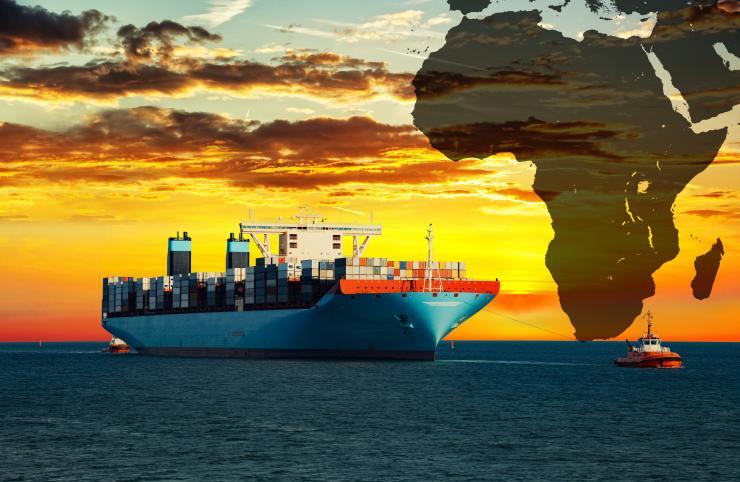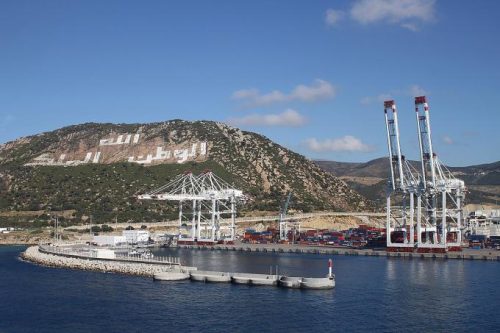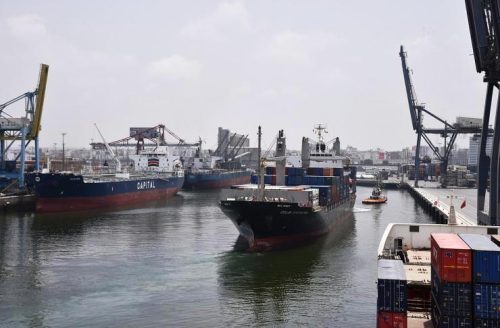African Ports. Competitiveness and Positioning in Global Supply Chains.

Since colonial times, African ports have been the main gateway to coastal countries and their vast hinterland. We examined the performance, challenges and development prospects of three of the largest ports in sub-Saharan Africa: Lagos in West Africa, Mombasa in East Africa and Durban in South Africa.
In this globalised economy, where ports are gateways for 80% of the world’s trade, Africa’s booming economy needs to accelerate its market access and improve its congested infrastructure to meet the challenge. This is important to stimulate economic growth, diversify economies, help them become globally competitive, create jobs and reduce poverty.
One of the main problems highlighted is that, despite its size, Africa represents only a fraction of the world’s value.
One of the reasons for this is that it still has a lot of beneficiations to do, as its exports are still largely commodity-based (minerals, hydrocarbons, cocoa, palm oil and timber).

Port of Tanger Med. It is the largest port in Morocco and Africa. CC BY-SA 4.0/ NAC
Ports are not only the gateways that provide access to these exported commodities, but they can also provide platforms to transform them and add value to these products.
PwC Africa’s Capital Projects and Infrastructure (CP&I) transport and logistics consultant recently published a report concluding that it is imperative that Africa harnesses the economic potential of its ports and shipping sector if it is to realise its growth ambitions.
Competitiveness and positioning in global supply chains determine Africa’s ability to export, and improving imports supports greater economic resilience. One of the challenges facing African ports is that shipment sizes are smaller than elsewhere, which inevitably increases the unit cost of a shipment. In this context, the lack of infrastructure hampers competitiveness and diversification.
The key challenge is therefore to attract investment and create the right environment for it. PwC argues that governments can significantly improve the investment environment in a number of ways. One is to increase cooperation between countries to create efficient trade flows and to recognize the role of specific ports.

The container terminal at the Port of Djibouti. The multipurpose port of Djibouti connects Europe, the Far East, the Horn of Africa and the Persian Gulf. CC BY-SA 4.0/ Skilla1st
Accordingly, investments should enhance competitive advantage and avoid white elephant redundancies that can be caused by hub wars leading to overcapacity of infrastructure in competing ports. To attract more infrastructure investment, governments are urged to move towards a landlord ownership model that allows private operators to drive port efficiency by investing in better equipment, logistics processes and systems. For example, streamlining customs processes can reduce container dwell time bottlenecks.
Increased trade volumes and more productive ports are expected to accelerate changes in global shipping routes serving Africa. The current crisis in the Red Sea, caused by Houthi attacks on Israeli-linked ships forcing many ships to divert through the Cape of Good Hope, has suddenly highlighted the global need to invest in African ports to receive ships from around the world for refueling or repairs when needed. Other challenges include reducing maritime insecurity in the Red Sea, the Horn of Africa and the Gulf of Guinea, and mitigating the effects of more frequent and severe climate events. (François Misser).
The Ten most Important Ports of Africa.
According to the African Union, 38 of the 54 African states are coastal or island states and over 90% of African imports and exports are transported by sea, making the continent a strategic gateway for international trade, currently in crisis due to instability in the Red Sea.
There are around a hundred African ports and they are competing for an ever-larger slice of the global maritime trade pie. The opening of Nigeria’s “revolutionary” billion-dollar deepwater seaport in Lekki in early 2023 reflects an increasingly competitive race for major shipping hubs in Africa. Currently, a number of other major multi-billion-dollar investments are underway in some countries, including South Africa, Morocco, Algeria, Angola, Egypt and Senegal. Bird Story Agency is a specialized news agency, designed to support African media. At the end of 2023, it published the ranking of the main African ports, based on the volume they can handle and their efficiency.
Morocco. Tanger Med. It is the largest port in Morocco and Africa. It has an annual handling capacity of 9 million 20-foot containers (TEU, Twenty-foot equivalent unit), exports of 1 million new vehicles and the transit of 7 million passengers and 700 thousand trucks per year. The World Bank and Standard and Poor’s Global Market Intelligence have ranked it sixth globally in terms of port efficiency with infrastructure that surpasses both African and many European ports.

Headquarters of Suez Canal Authority in Port Said. It ranks 15th in the world in terms of performance based on port calls and ships. Photo: Daniel Csörföly
Egypt. Port Said. It is Egypt’s busiest, with a capacity to handle around 5 million tons of 20-foot containers per year. Globally, it ranks 15th in terms of performance based on port calls and ships.
South Africa. Durban. It is the largest and busiest marine terminal in Southern Africa with a container handling capacity of 2.9 million TEUs and the capacity to handle over 600 thousand units of shipped vehicles. Every year more than 5,000 ships dock at the port, generating around 60% of South Africa’s trade revenue. A contract for the modernization and management of the container port was recently signed with Philippines-based International Container Terminal Services Inc.
Nigeria. Leek Deep Sea. This recently expanded port is now Nigeria’s first deep-sea maritime port and one of the largest in West Africa. It can handle 2.7 million 20-foot TEUs and is designed to handle ships with a capacity exceeding 18 thousand TEUs.
South Africa. Ngqura. It is a South African deep-water container port, strategically located within a special economic zone, with a handling capacity of approximately 2 million TEUs. It has the longest breakwater (2.7 km) in South Africa.
Ivory Coast. Abidjan. After adding a second container terminal in December 2022, Ivory Coast’s main port has increased its total container handling capacity to 2.5 million TEUs per year.

Casablanca container port. It is one of the largest artificial ports in the world. CC BY-SA 4.0/ Niels Johannes
Morocco. Casablanca. With a handling capacity of approximately 1.3 million TEUs, it is one of the largest artificial ports in the world. The Moroccan port can handle 21.3 million tons of cargo per year.
Kenya. Mombasa. Considered the main gateway to East Africa for over a century, Kenya’s port has a handling capacity of 1.65 million containers. It consists of four ports: Port Reitz, Old Port, Kilindini and Port Tudor. Its title as “gateway” is increasingly contested in the region by Dar es Salaam in Tanzania.
Djibouti. Doraleh. The multipurpose port of Djibouti, with a capacity to handle 1.6 million containers per year, connects Europe, the Far East, the Horn of Africa and the Persian Gulf. The latest 2020 Global Container Port Performance Index from the World Bank and IHS Markit recognized Djibouti as the leading container port in Africa and 61st globally in terms of efficiency. A new railway connects the port with landlocked Ethiopia.
Ghana. Tema. The busiest port in Ghana. It recently added a new terminal that can accommodate ships of up to 22 thousand TEUs, compared to the previous 5 thousand. The new terminal also increases Ghana’s container handling capacity from 800,000 to approximately 3.7 million TEUs per year.



